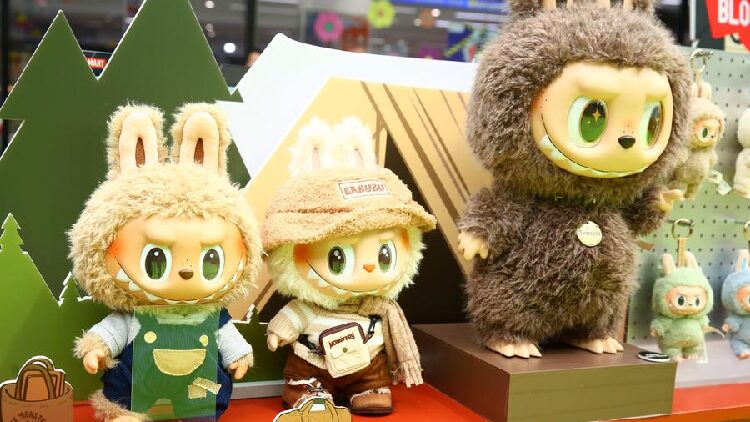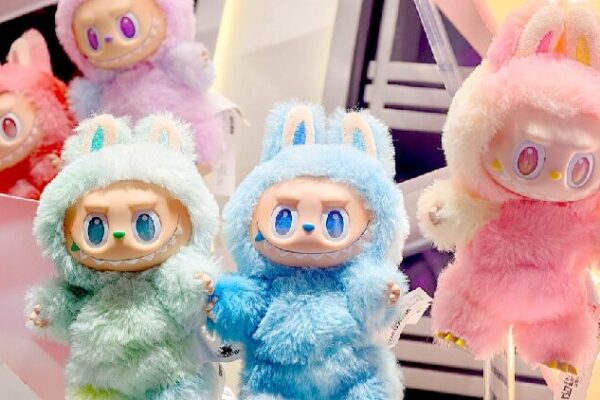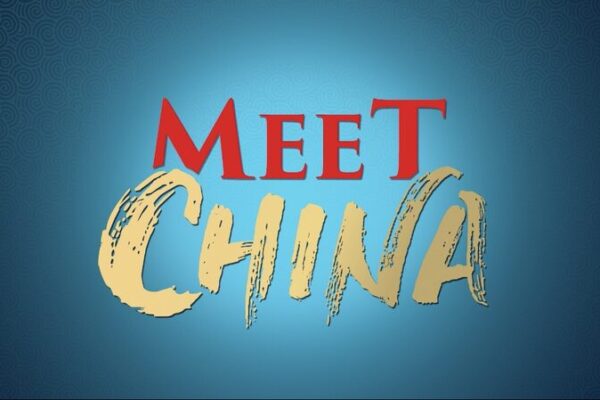“Buy goods for good moods” is the latest lifestyle slogan taking China’s Gen Z and Millennials by storm. The term “guzi”, a transliteration of “goods,” refers to a wide array of spin-off products tied to anime, comics, games, novels, and cosplay (ACGNC). From affordable badges, posters, and trading cards to high-end model figures and plush toys, these “goods” are capturing the hearts—and wallets—of young consumers.
The rapid rise of the “goods economy” reflects the immense potential of new economic drivers in the Chinese market. It also showcases the younger generation’s desire for products that resonate with their personal interests. These innovative items are reshaping global perceptions of “made in China” products, highlighting creativity and individuality over mass-produced stereotypes.
Emotional Investment
So, what’s behind the addictive allure of “goods”? For many young Chinese, these products offer more than just physical items; they provide emotional solace and a sense of community. Imagine a teenage boy whose bedroom is filled with mini figures of Nezha, a beloved figure in Chinese mythology known for his adventurous and rebellious spirit. Or consider the thirty-something office worker who spends hundreds of yuan monthly on these treasures, referring to it as an “emotional investment.”
Visiting “guzi” stores has become a weekend ritual—a form of therapy—for many. The adorable and playful collectibles offer comfort and joy. The act of purchasing goods like Labubu is affectionately termed “eating guzi,” and it’s about more than buying toys; it’s about adding emotional value to one’s life. The experience combines mystery, storytelling, and fun. With “blind box” toys, for example, you never know what character you’ll get until you open it. Will this be the time you find a rare hidden edition? Each unboxing is a new adventure.
Tiny Goods, Huge Impact
One of the standout stars in the “guzi” world is Labubu—a whimsical doll with pointed ears and a mischievous grin, created by Hong Kong artist Kasing Lung. Labubu has captured the hearts of fans across China and even throughout Asia, thanks in part to social media buzz from K-pop singers. New releases and restocks of Labubu toys often sell out within minutes, and limited editions fetch high prices on resale platforms.
The “goods economy” has emerged as one of the biggest surprises in China’s consumer landscape in 2024. While these items may be small, they’re generating significant economic impact. The industry, now worth trillions of yuan, is expected to continue its upward trajectory. Leading companies like Pop Mart, a Chinese toymaker at the forefront of this trend, reported an impressive annual sales growth of 107% in 2024.
From “Made in China” to “Created in China”
Labubu and other popular “goods” are helping to redefine global perceptions of products from the Chinese mainland. Gone are the days when “made in China” was synonymous with cheap plastic gadgets. Today’s Chinese products are celebrated for their unique designs, creativity, and individuality.
This shift also indicates a global consumer preference moving from quantity to quality, especially among the youth. More buyers are seeking emotional value in their purchases—not in terms of luxury, but in the experience and personal connection. Chinese-made products are becoming expressions of trendiness, taste, and identity. People are choosing these goods not just because they’re affordable, but because they’re cool, fun, and surprisingly innovative.
At its core, the “goods economy” is the Chinese mainland’s answer to the hyper-personalized and highly innovative demands of global consumers. The worldwide appetite for “guzi”-style products has exploded. This agile, internet-savvy, and ever-evolving sector is poised to grow even stronger, potentially holding the key to future economic growth.
Reference(s):
cgtn.com








